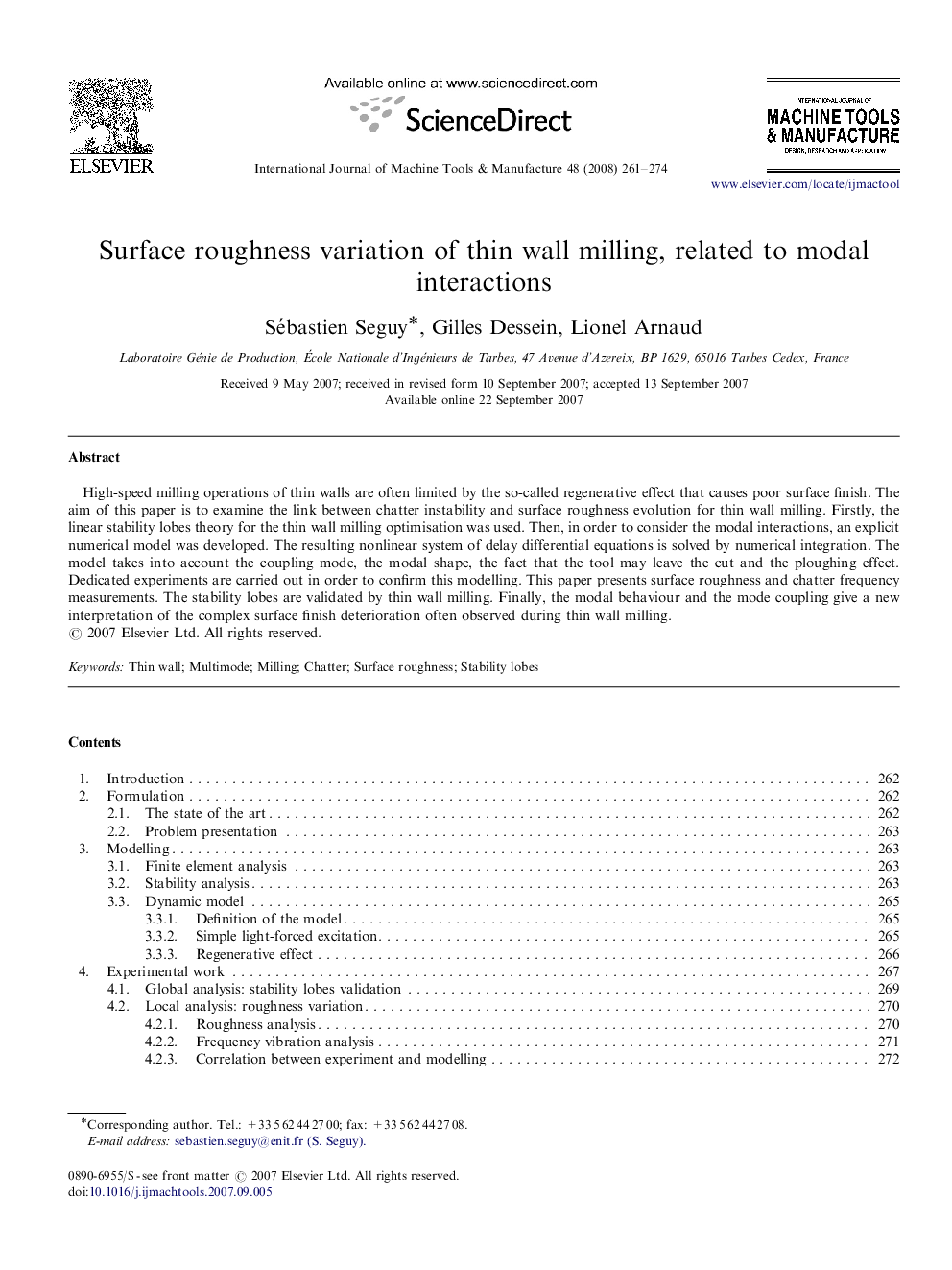| Article ID | Journal | Published Year | Pages | File Type |
|---|---|---|---|---|
| 781155 | International Journal of Machine Tools and Manufacture | 2008 | 14 Pages |
High-speed milling operations of thin walls are often limited by the so-called regenerative effect that causes poor surface finish. The aim of this paper is to examine the link between chatter instability and surface roughness evolution for thin wall milling. Firstly, the linear stability lobes theory for the thin wall milling optimisation was used. Then, in order to consider the modal interactions, an explicit numerical model was developed. The resulting nonlinear system of delay differential equations is solved by numerical integration. The model takes into account the coupling mode, the modal shape, the fact that the tool may leave the cut and the ploughing effect. Dedicated experiments are carried out in order to confirm this modelling. This paper presents surface roughness and chatter frequency measurements. The stability lobes are validated by thin wall milling. Finally, the modal behaviour and the mode coupling give a new interpretation of the complex surface finish deterioration often observed during thin wall milling.
